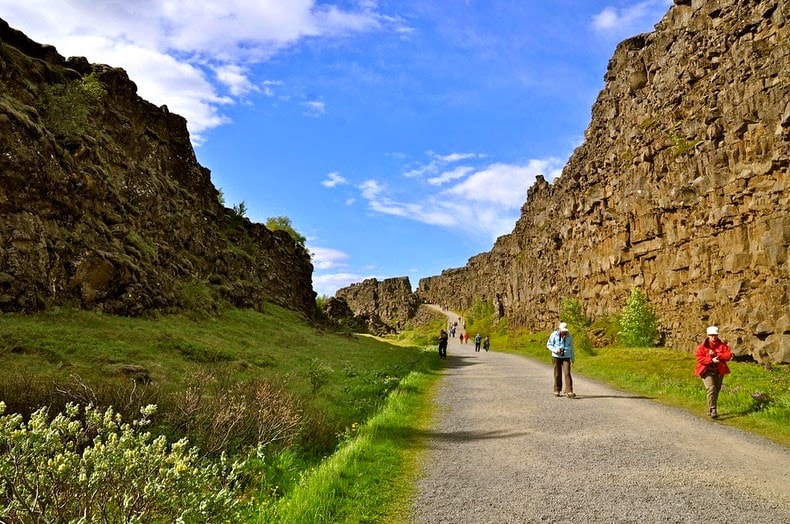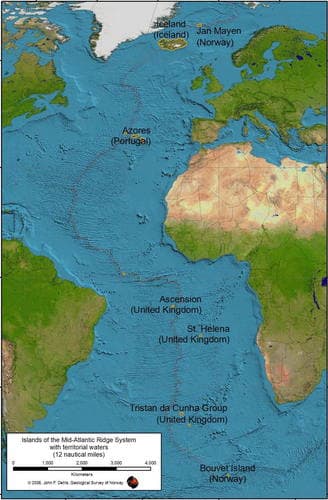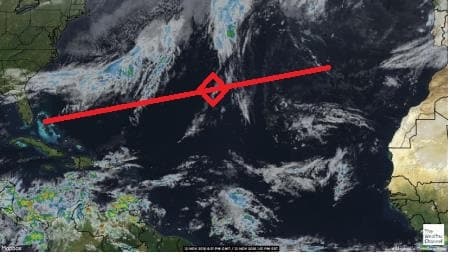We are still doing well. We have even less wind than before, down from wind force 4 to a small 3 and the sun keeps shining as if it is all free of charge. And for every gift we say thank you and happily accept it. At the moment there is not much to see outside, wildlife in this particular area of water is fairly quiet as it is too far from land for birds and for some reason this is not much of a dolphin area. The Navigators on the bridge have to get excited about spotting buoys as those are very much the only things which come floating by. And as most of the buoys are either white, red or yellow you can easily see them. All of them lost over board or broken free from nets during storms.
Under water it is a different story. A few thousand feet down we are looking at hills, mountains and valleys. We are about to pass over the Mid Atlantic Ridge and it would be really interesting to see this. But the only place where you can see it is on Iceland and that is one of the reasons why Iceland has so much volcanic action.
The same reason applies here as I already mentioned for why Madeira is there. A crack in the ocean floors crust which molten rock comes up out of the core of the planet and solidifies as a new crust. The gaps where this material comes up, we normally call Volcano’s as the material tends to pile up in the same way as candle wax settles on the sides of a candle. If the crack moves a little bit, then a volcano goes dormant and eventually the place becomes inhabitable until it blows up again. Mount St. Helens was a prime example of this.
The cracks in the earth’s crust and the fact that they do not always remain in the same place is caused by the Tectonic movement of the earth’s plates upon which the continents rest. They are in a continuous if very slow motion and the European plate is disappearing under the American plate in mid ocean. If we waited long enough a piece of material which is going down here at the ridge would come up again somewhere else……………….. eventually.
On average the most active plate only moves a few centimeters a year, so the process takes a while. What we notice is the occasional earth tremor, strong or less strong, when the plate is releasing its pressure as it moves along.
Right below were we are, the crack is quite active and the ocean bottom is full of smokers (small pipes which nature constructs from the minerals which come out of the earth’s core and are cooled down by the water of the ocean. In the recent years it has been discovered that the warmth and escaping minerals have created a complete own and very local biosphere. Regardless of the enormous pressure down there, nature thrives. With modern technology in the form of unmanned subs, we now finally know that a lot of things are going on down there. It is just a pity we cannot see it all from the ocean surface.
What was visible today, for those who were walking around the ship, was the crew who are forever cleaning, painting and maintaining. This morning there was the strange sight of some sailors with lifejackets on sitting in the Fast Rescue Boat. Always a bit un-nerving: “Do they know something we do not know”? But they were at work and we have the regulation when you are close to the side of the ship, and there is no railing, you wear a lifejacket and a safety line.
The Fast Rescue Boat is an addition to the ships since the 1990’s. For Holland America they appeared with the Vista Class. The idea was, heavily promoted by the Safety authorities (remember my blog from yesterday), that if you had a dedicated boat on board, which you could lower very fast and sail very fast, then you could pick up somebody from the water very fast. It works quite well for shore organizations such as the lifeboat stations along the coasts but for the cruise ships it is a bit more challenging.
As said the weather is still holding and it looks at the moment even the thunder storms are moving away. We might be lucky.




November 13, 2016 at 4:42 pm
As I write this I am on the Koningsdam sailing out of the Port Everglades harbor. I wouldn’t have been here this soon if I hadn’t gotten so enthused about it from your blogs last spring. I already love the Dutch Cafe – surrounded by all things Delft and Dutch and delicious!